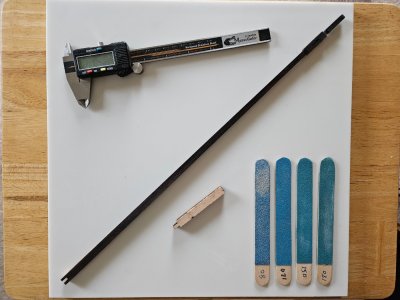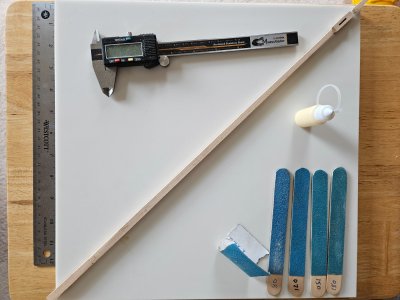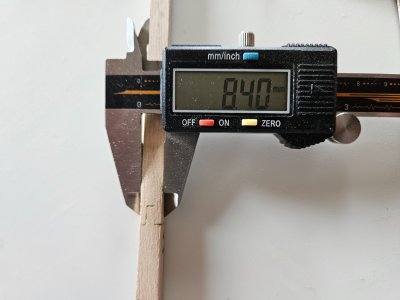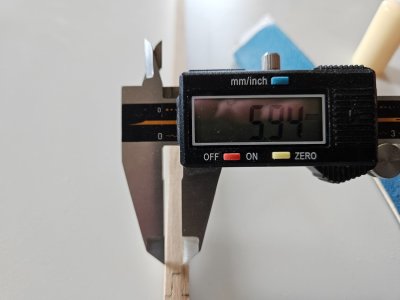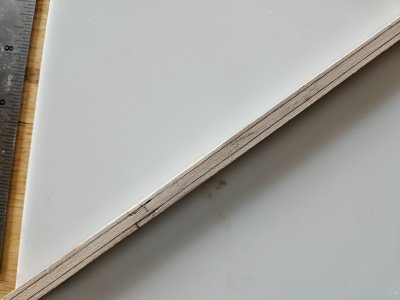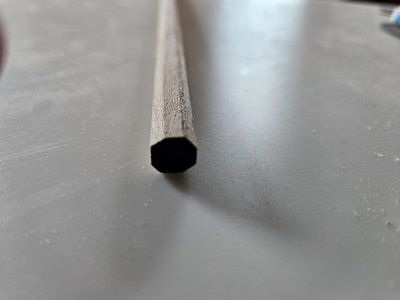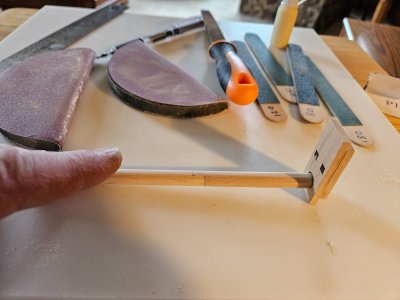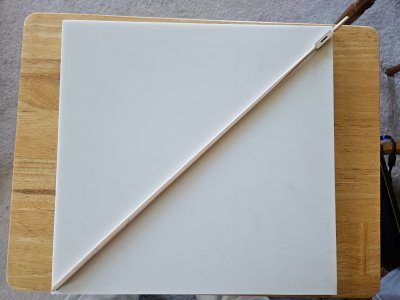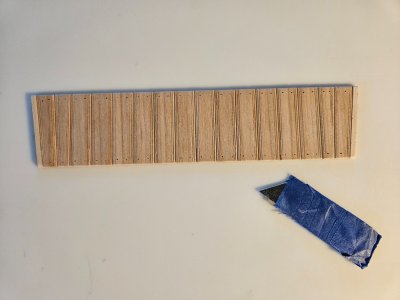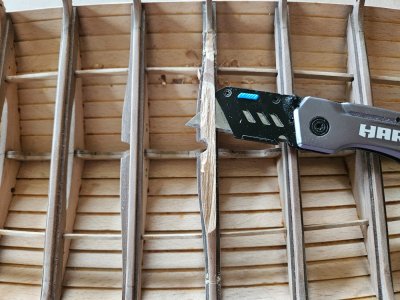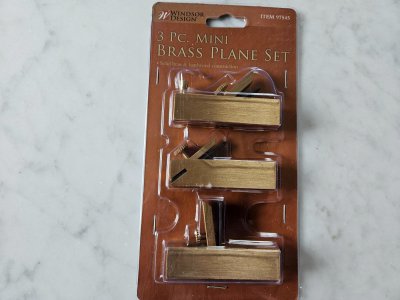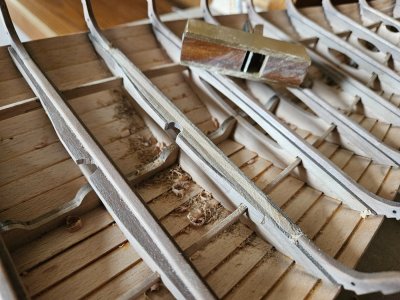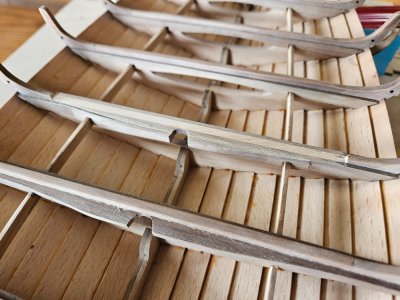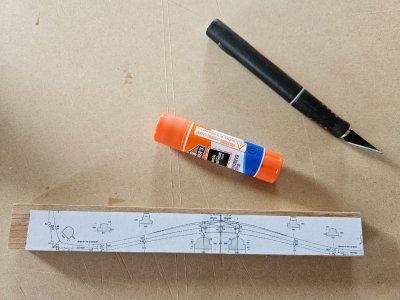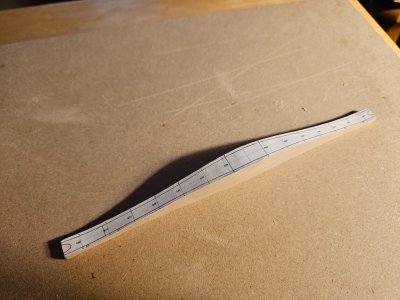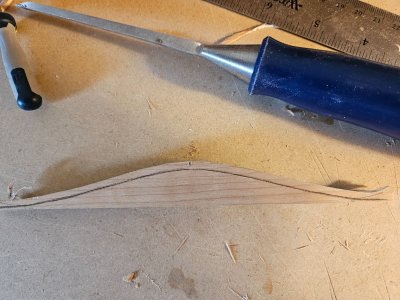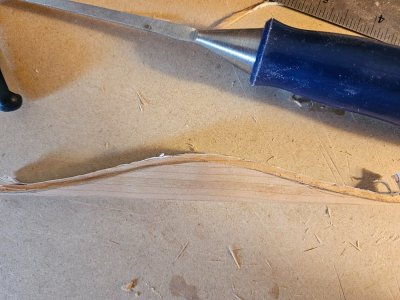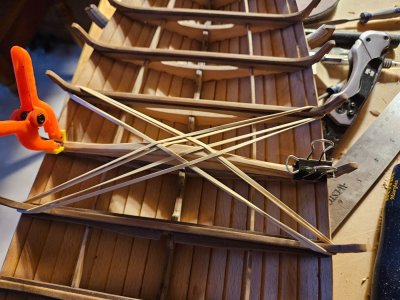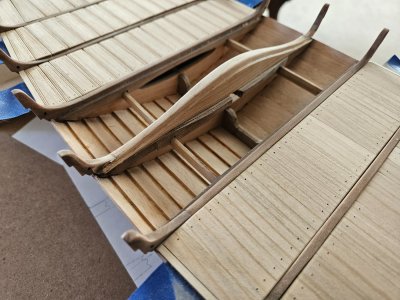Mast
@JBB , this one's for you!

Our 14 mo. old great grandson came for a sleepover Friday night - yay! I thought I would take a break from deck boards and do something quick and easy while he napped. (To be honest, though, he's just started walking and after chasing that little rascal around all morning,
we're the ones who needed a nap!



)
I decided to tackle the mast. It's provide in two pieces because the full length mast wouldn't fit into the box. It's a twice-lasered piece to allow tapering in both dimensions.
View attachment 513461
First step was to clean up all the char so I could see pencil marks on it.
View attachment 513462
Next get a good fit for the mortise and tenon on the extension and glue it in place.
View attachment 513464
According to Dr. Bischoff, the remains of the mast found in the Oseberg (the lower third or so) had a cylindrical cross section except for the forward face which was flat. The mast likely started out as a square beam, was made octagonal and then rounded, leaving the forward face flat. It is presumed this was dong to give a bit more mass to the forward side, making the mast a bit stronger.
Rather than try to "eyeball" it, I decided to draw some guidelines along the shaft, sand the corners to the lines, making an octagon, then finish by rounding of 7 sides. So, first step - take measurements of the thickness at the joint and just below the sheave block (in both dimensions since the shaft is not exactly square, but a little rectangular - not by much, but enough).
View attachment 513474
Many people think that you can turn a square into a rectangle by dividing each side into thirds and then connecting the diagonal corners. That doesn't work - the diagonal sides will end up wider than the remainder of the original sides. So, you must take the measurement across the face, multiply by 0.707, and mark a line that distance from each corner. If you don't know how I came up with 0.707, let me know and I'll post a little trig 101 lesson.
 View attachment 513479
View attachment 513480
View attachment 513479
View attachment 513480
The extension piece at the bottom doesn't taper, so I could use the same measurements at the joint and at the foot. Then, connect the lines ...
View attachment 513482
... and sand the corners to the lines, forming an octagonal cross section.
View attachment 513484
After sanding it round, except for the forward face, I sanded the very top portion above the sheave. This I did by eye as it is relative small in diameter. Then I held the flat side of the mast against the table and placed the mast step (glad I hadn't glued it in yet

) on the foot and used it to mark guidelines on the end to make a tenon that would fit into the slot in the step.
View attachment 513485
Using those marks, I cut a tenon to fit and gave the mast a final sanding. I blended the flat face into a completely round section near the top because I figured it should be round to allow the yard to be easily swung from side to side.
View attachment 513486
View attachment 513487
View attachment 513488
It sounds like a lot of work, but was really only about an hour or so. It took me longer to make this entry into the log than it did to shape the mast!

So that was my diversion - the baby woke up and it was back to chasing!


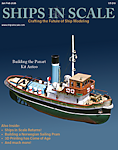



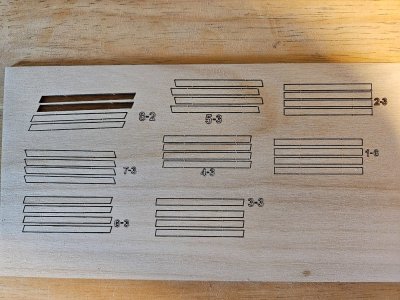
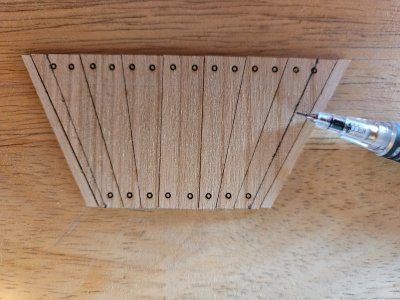
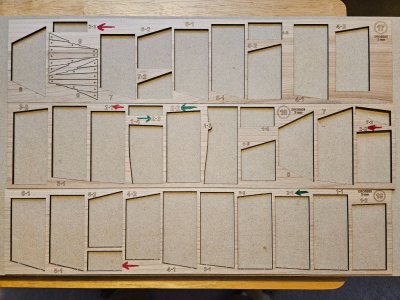



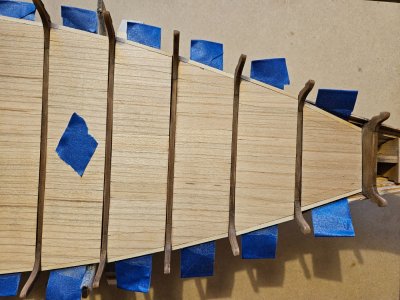


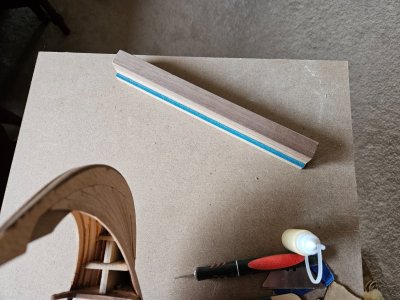

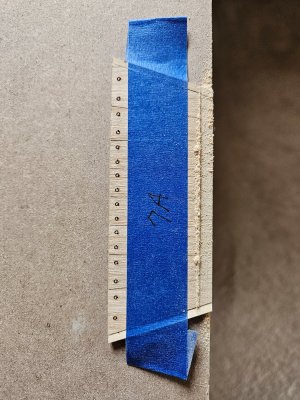

 )
)